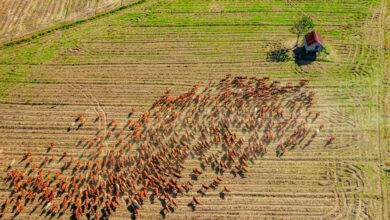From Reactive to Proactive: The Power of Foresight in Process Management

Ever felt like managing complex business operations is like navigating a maze blindfolded? You know where you started, and you know where you want to end up, but predicting exactly how long it will take to get there, or where potential bottlenecks might occur, often feels like pure guesswork. This uncertainty isn’t just frustrating; it can lead to missed deadlines, inefficient resource allocation, and unhappy customers.
For years, businesses have relied on reactive process monitoring, looking at what’s already happened to understand performance. But imagine a world where you could peer into the future of your ongoing processes, anticipating outcomes before they materialize. This isn’t science fiction; it’s the promise of predictive process monitoring, and at its heart are powerful new tools like Graph Neural Networks (GNNs). Specifically, recent innovations are showing us how models like PGTNet can transform event logs into crystal balls, offering unprecedented foresight into the remaining time of active business process instances.
From Reactive to Proactive: The Power of Foresight in Process Management
In the fast-paced world of modern business, every process—whether it’s onboarding a new client, fulfilling an order, or resolving a support ticket—is a dynamic journey. Traditionally, we’ve analyzed these journeys after they’ve completed, using process mining techniques to uncover inefficiencies and patterns. While incredibly valuable, this approach is fundamentally reactive. It tells you what went wrong, but not necessarily what *will* go wrong with an ongoing task.
Predictive process monitoring flips this script. Its goal is to provide foresight, allowing organizations to intervene proactively. Think about predicting the remaining time for a critical manufacturing order or forecasting when a customer’s complex support case will finally be resolved. This isn’t just about tweaking efficiency; it’s about strategic decision-making, optimizing resource allocation, and ultimately, enhancing customer satisfaction.
The core challenge, however, lies in extracting meaningful predictive signals from the vast, often messy, data generated by business processes. These “event logs” detail every step, every timestamp, every resource involved. They’re rich with information, but their sequential nature can make it difficult to capture complex, non-linear relationships and dependencies that truly influence process duration.
Graph Neural Networks: Mapping the Intricacies of Business Processes
Enter Graph Neural Networks. GNNs are a revolutionary class of deep learning models designed to process data represented as graphs. And if you think about it, business processes are inherently graph-like. Activities are nodes, and the flow of control, or the sequence of events, forms the edges between them. This natural synergy makes GNNs particularly well-suited for understanding the intricate dance of tasks, resources, and time that defines a business process.
The magic begins by transforming raw event logs into a structured graph dataset. Each partial trace of an ongoing process instance—effectively, the journey so far—is converted into a unique graph. Within these graphs, individual event classes (like ‘initiate order’ or ‘approve payment’) become nodes, and the direct-follow relations between them become edges. But it’s not enough to just connect the dots; the real power comes from enriching these connections with vital contextual information.
Building an Intelligent Process Graph: Beyond Simple Connections
The strength of a GNN model like PGTNet, as explored by researchers like Keyvan Amiri Elyasi, Han van der Aa, and Heiner Stuckenschmidt, lies in its meticulous graph representation. It doesn’t just create a skeletal outline; it imbues the graph with rich features that reflect the true dynamics of a process:
- Temporal Features: Time is a critical dimension in any process. PGTNet incorporates five distinct temporal features for each edge, capturing everything from the total duration of a direct-follow relation to the time elapsed since the case started, or even the time since the start of the day or week. These features, normalized to account for varying scales, provide a detailed temporal fingerprint for every transition.
- Workload Features: A process doesn’t exist in a vacuum. The overall workload can significantly impact its remaining duration. To account for this, PGTNet includes the number of active cases at the timestamp of an event as an edge feature. This crucial insight helps the model understand the broader operational context, recognizing when resources might be strained or when things are running smoothly.
You might wonder why these rich details are encoded as *edge* features rather than node features. The answer is elegant: it keeps the node semantics simple and focused on the event class itself. This design choice makes the model more adaptable, even when dealing with event logs containing a vast array of different event classes, by leveraging sophisticated embedding layers.
PGTNet in Action: From Complex Data to Precise Remaining Time Predictions
Once an event log is meticulously converted into this feature-rich graph dataset, it’s ready to train PGTNet. The core task here is framed as a graph regression problem: predicting a continuous value (the remaining time) based on the input graph. The model learns by minimizing L1-Loss, essentially finding the mean absolute error between its predictions and the actual remaining times observed in the training data, employing a robust backpropagation algorithm.
Under the Hood: PGTNet’s Architecture and Encoding Secrets
PGTNet leverages the powerful GPS Graph Transformer recipe, which means it’s built for flexibility and performance. Its architecture comprises two main acts:
- Embedding Modules: These are the initial translators. They map both node and edge features into a continuous, high-dimensional space. Think of it as giving the model a rich, numerical vocabulary for understanding each part of the process. An embedding layer ensures that similar event classes are numerically ‘closer,’ while fully-connected layers compress high-dimensional edge features. Crucially, these modules also compress the graph structure itself into various Positional and Structural Encodings (PE/SEs), seamlessly integrating them into the node and edge features.
- Processing Modules: Once embedded, the data passes through sophisticated processing blocks, inspired by both Message Passing Neural Networks (MPNNs) like the Graph Isomorphism Network (GIN) and traditional Transformer architectures. This dual approach allows the model to both propagate information locally within the graph and capture global dependencies through attention mechanisms.
The PE/SEs are particularly fascinating. They’re what give the GNN a sense of “where” things are in the process, both globally and locally. For instance, Laplacian eigenvector encodings (LapPE) provide a global sense of an event’s position within a prefix, while Random-walk structural encoding (RWSE) helps in recognizing recurring, local control-flow patterns. Graphormer’s approach combines centrality encoding (how important a node is locally) with edge encoding (relative position), enriching both node and edge features further. This multi-faceted encoding ensures the model isn’t just seeing a collection of events, but a coherent, context-aware narrative of the process flow.
This modular design, offering choices for various PE/SEs and processing blocks, means PGTNet can be finely tuned to extract the most pertinent insights from diverse process landscapes, moving us closer to truly intelligent and adaptable process monitoring.
The Road Ahead: Smarter Operations, Better Decisions
The advent of Graph Neural Networks like PGTNet marks a significant leap forward in predictive process monitoring. By moving beyond simple sequential analysis to embrace the inherent graph structure of business processes, we can unlock a new level of foresight. Imagine a project manager knowing with high confidence the exact remaining time on a critical deliverable, or a logistics coordinator predicting potential shipping delays weeks in advance due to evolving workload patterns. This isn’t just about efficiency; it’s about empowering businesses with the intelligence to adapt, optimize, and innovate.
The ability to predict remaining time with accuracy transforms business operations from reactive firefighting to proactive strategic execution. It enables better resource planning, more reliable customer commitments, and ultimately, a more agile and resilient organization. As GNNs continue to evolve, their application in process mining promises to make truly intelligent automation and data-driven decision-making not just a goal, but an operational reality.





